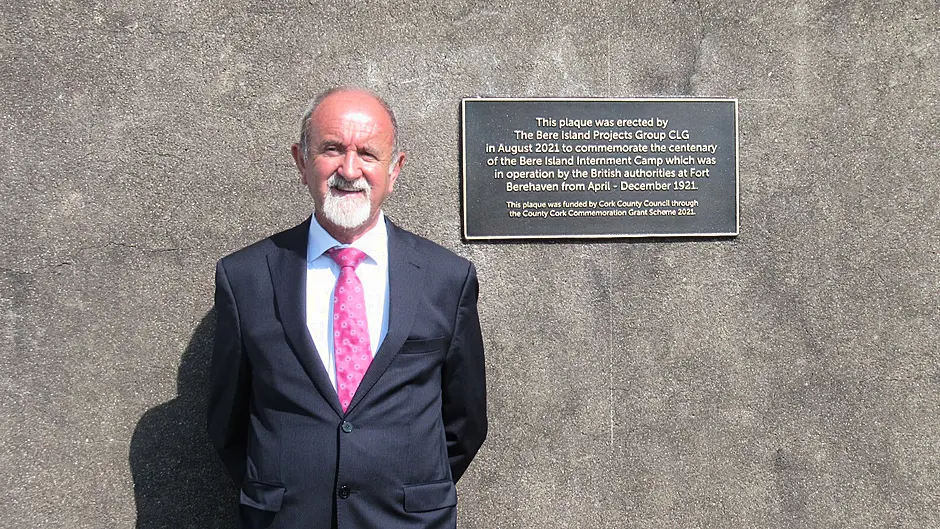BY HELEN RIDDELL
A PLAQUE has been unveiled on Bere Island to commemorate the centenary of the island’s internment camp.
Last Friday, Eugene Glendon, chair of Bere Island Projects Group, unveiled the plaque at Rerrin Military Barracks, which was formerly known as Fort Berehaven and was the site where the internment camp was located.
Bere Island was once a strategic British military base, which contained seven gun batteries.
Its safe harbour provided shelter for both British warships during WWI and also the US Navy, while protecting Atlantic convoys.
The island was also one of Ireland’s three Treaty Ports. In 1920 a prison camp was opened on the island by the British authorities for convicted Republican prisoners. However, by April 1921, all convicted prisoners had been transported to the prison at Spike Island, whilst all the internees who had been incarcerated on Spike Island were transported to Bere Island, so that the island camp became an internment camp only.
The camp was in operation from April 1921 until December 10th 1921 and consisted of four timber huts, which at one stage housed 284 men.
The event was attended by island residents and concluded with a flag raising ceremony by members of the Irish Defence Forces.
Mr Glendon spoke of the stories of the men who were interned on the island, and how he discovered through a camp autograph book that his own uncle had been one of the internees.
The plaque was funded by Cork County Council through the Cork County Commemoration Grant Scheme 2021, and is one of a number of events Bere Island Projects Group has organised since 2016 as part of Ireland’s Decade of Centenaries.
Bere Island Projects Group is also producing a short film, which is being funded by the Heritage Council, documenting the story of the island internment camp. This will be available to view online in late September.








